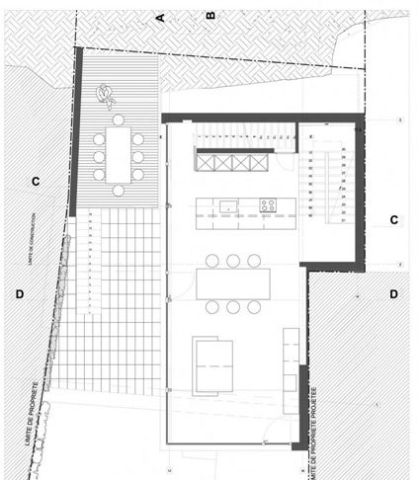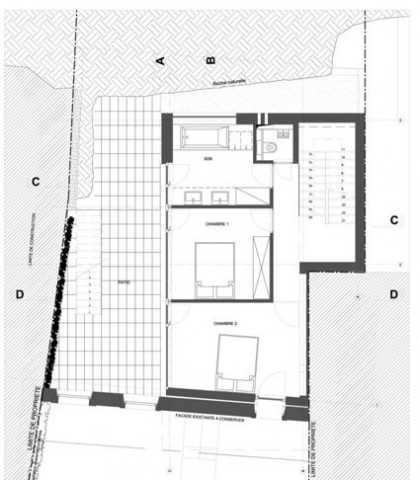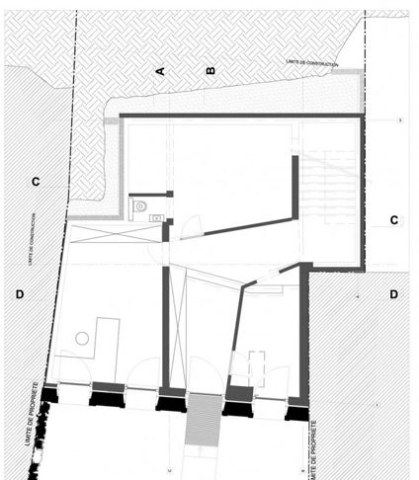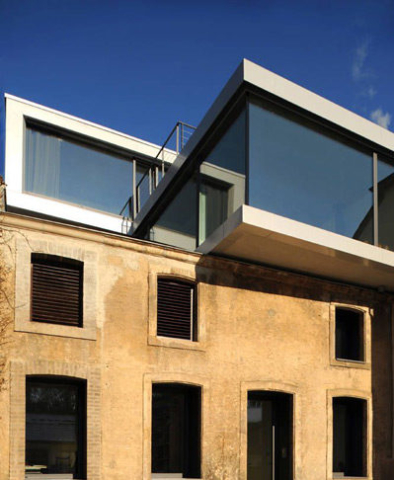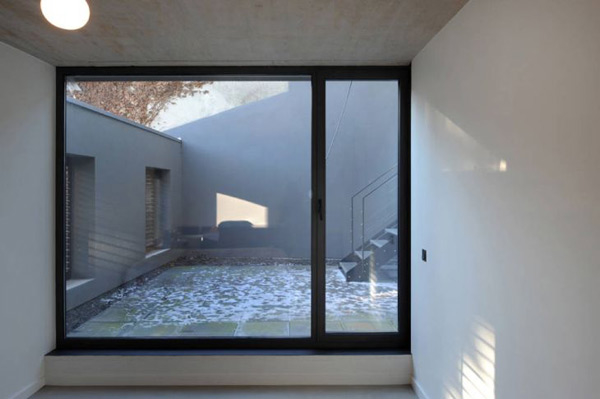Arhitekti: Steinmetz De Meyer
Lokacija: Altvies , Luksemburg
Fotografije: Catherine Thiry
Očuvanje postojeće fasade bio je osnovni prioritet projekta, ne samo zbog obećanja bivšim vlasnicima, već i zbog želje novih vlasnika da sačuvaju deo prošlosti. Ova fasada pozicionirana je na maloj ali značajnoj udaljenosti od puta. Međutim, ovakva konfiguracija zadala je određene uslove. Znanje i strast izvođača radova japanske arhitekture i tradicije doprineli su projektu.
Za početak, bilo je neophodno osmisliti visinu objekta kako bi se osigurali vidici i osvetljenje. Izbačeni i artikulisani volumeni prvog sprata formiraju spoljašnje prostore prilagođene različitim funkcijama objekta. Spoljašnji prostori su dodatni delovi koji doprinose izrazu kuće. Dvorište smešteno iza stare fasade, pokrivena terasa ispod volumena glavne spavaće sobe naslanja se na dnevni boravak, a krov se pretvara u terasu.
Svaka dostupna površina prizemlja je iskorišćena. Lobi, kancelarija i pomoćna prostorija osvetljene su dnevnim svetlom kroz prozore postojeće fasade. Podrum i kotlarnica smešteni su u zadnjem delu parcele, mračnom segmentu u podnožju stene. Dve spavaće sobe i kupatilo nalaze se na prvom spratu. Svaka od ovih prostorija ima direktan izlaz u dvorište na istom nivou.
Na drugom spratu, segment sa boravkom, trpezarijom i kuhinjom odvojen je od postojeće fasade i kao stakleni volumen prostire se iznad nje ka jugu. Natkrivena terasa u blizini stene povezana je sa kuhinjom. Glavna spavaća soba sa garderoberom i kupatilom prostire se do trećeg sprata. Orjentisana je ka jugu i gleda na šumu i krovnu terasu koja je privilegovana južnom pozicijom, visinom i udaljenošću od susedstva i ulice.
Eksterijer i enterijer susreću se u istoj razmeri. Originalna fasada, stena i dva zida nisu prepreke već čuvari univerzuma projekta.
Architects: Steinmetz De Meyer
Location: Altwies, Luxembourg
Photographs: Catherine Thiry
Preserve the existing façade was the first priority of this project not only because of the promise made to the former owners but also because the new landlords cared not to sweep the past away. In addition, this facade stood conveniently at a short but certainly benefit distance from the road. However, this particular configuration had certain requirements. In parallel, knowledge and passion of the contractor for Japanese architecture and traditions fed the reflections on the project.
First, it was necessary to develop the project in height to go and reach the views and light. Then, from the first floor, dislodged and articulated volumes create outdoor spaces adjusted to the different functions of the house. The outdoor areas are all additional parts that enhance the experience of the home. Thus a patio has its place behind the old facade, a covered terrace under the volume of the master bedroom adjoins the living rooms, and the roof turns into a terrace.
Every available surface of the ground floor is used. It includes the lobby, an office and a utility room benefiting from natural light through the windows of the existing façade. As for the cellar and boiler room, they find their place in the bottom plot in the dark at the foot of the rock. Two bedrooms and a bathroom fill the first floor. Each of these rooms enjoys a direct access to the patio at the same level.
At the second floor, the ensemble living / dining-room / kitchen dissociates itself from the existing façade as a glass volume overhanging to the south. A covered terrace near the rock is accessible from the kitchen. The master bedroom with dressing and bathroom peaks at the 3rd floor of the house. It enjoys the south-facing and views of the forest and a roof terrace with its privileged southern exposure, height and setback from the neighborhood and the street.
The exterior and interior spaces meet in the same scale ratio. The original façade, the rock and the two party walls are therefore no longer obstacles but the guardians of the universe within the project.




